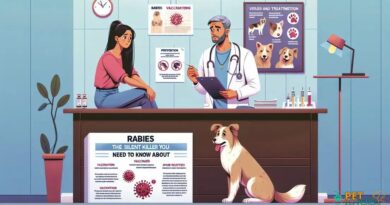What is Noisy environments
What is Noisy Environments?
Noisy environments refer to settings where sound levels are significantly elevated, often resulting in disturbances that can affect both humans and animals, including dogs. These environments can include urban areas, construction sites, busy streets, and even crowded public spaces. Understanding the implications of noisy environments is crucial for dog owners, as excessive noise can lead to stress and anxiety in pets.
Impact of Noise on Dogs
Dogs have a heightened sense of hearing compared to humans, making them more susceptible to the effects of noise. Loud sounds can trigger fear responses, leading to behaviors such as barking, hiding, or even aggression. It’s essential for dog owners to recognize how their pets react to different noise levels and to take steps to mitigate any negative effects.
Common Sources of Noise
There are various sources of noise that can create a challenging environment for dogs. Common culprits include traffic, fireworks, loud music, and construction work. Each of these sounds can vary in intensity and duration, but all have the potential to disturb a dog’s peace and well-being. Identifying these sources can help owners manage their dog’s exposure to noise.
Signs of Stress in Noisy Environments
When exposed to noisy environments, dogs may exhibit several signs of stress. These can include panting, pacing, drooling, and attempts to escape the noise. Additionally, some dogs may become more vocal, barking excessively in response to the sounds around them. Recognizing these signs is vital for owners to provide the necessary support and comfort to their pets.
Creating a Calm Space
To help dogs cope with noisy environments, creating a calm space at home is essential. This can involve designating a quiet area where the dog can retreat when feeling overwhelmed. Providing comfortable bedding, toys, and even white noise machines can help drown out external sounds and create a more serene atmosphere for the dog.
Training Techniques for Noise Sensitivity
Training techniques can play a significant role in helping dogs adjust to noisy environments. Desensitization and counter-conditioning are effective methods that involve gradually exposing the dog to the noise in a controlled manner while rewarding calm behavior. Over time, this can help reduce the dog’s fear and anxiety associated with loud sounds.
Using Calming Products
There are various calming products available that can assist dogs in coping with noisy environments. These include anxiety wraps, calming collars, and pheromone diffusers. Each of these products is designed to provide comfort and reassurance to dogs, helping them feel more secure in the face of overwhelming noise.
Seeking Professional Help
If a dog exhibits severe anxiety or stress in noisy environments, seeking professional help from a veterinarian or a certified dog trainer may be necessary. These professionals can provide tailored advice and strategies to help manage the dog’s reactions to noise, ensuring a better quality of life for both the pet and the owner.
Long-Term Effects of Noise Exposure
Long-term exposure to noisy environments can have detrimental effects on a dog’s health. Chronic stress can lead to various health issues, including digestive problems, weakened immune response, and behavioral issues. Therefore, it is crucial for dog owners to be proactive in managing their pet’s exposure to noise to promote overall well-being.
Conclusion
Understanding what noisy environments are and their impact on dogs is essential for responsible pet ownership. By recognizing the signs of stress, creating a calm environment, and utilizing training techniques and calming products, owners can help their dogs navigate the challenges posed by excessive noise. This proactive approach not only enhances the dog’s quality of life but also strengthens the bond between pet and owner.




